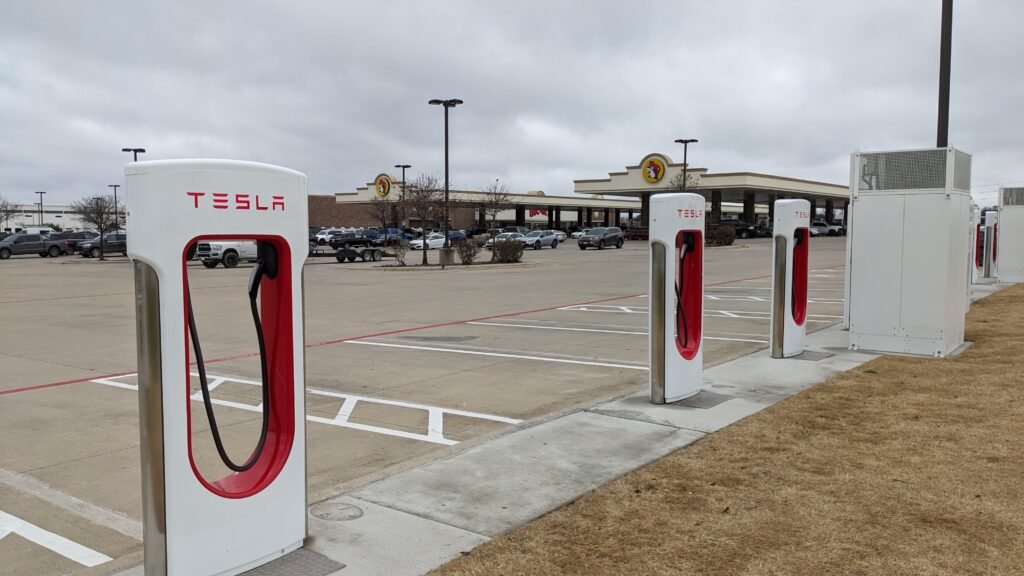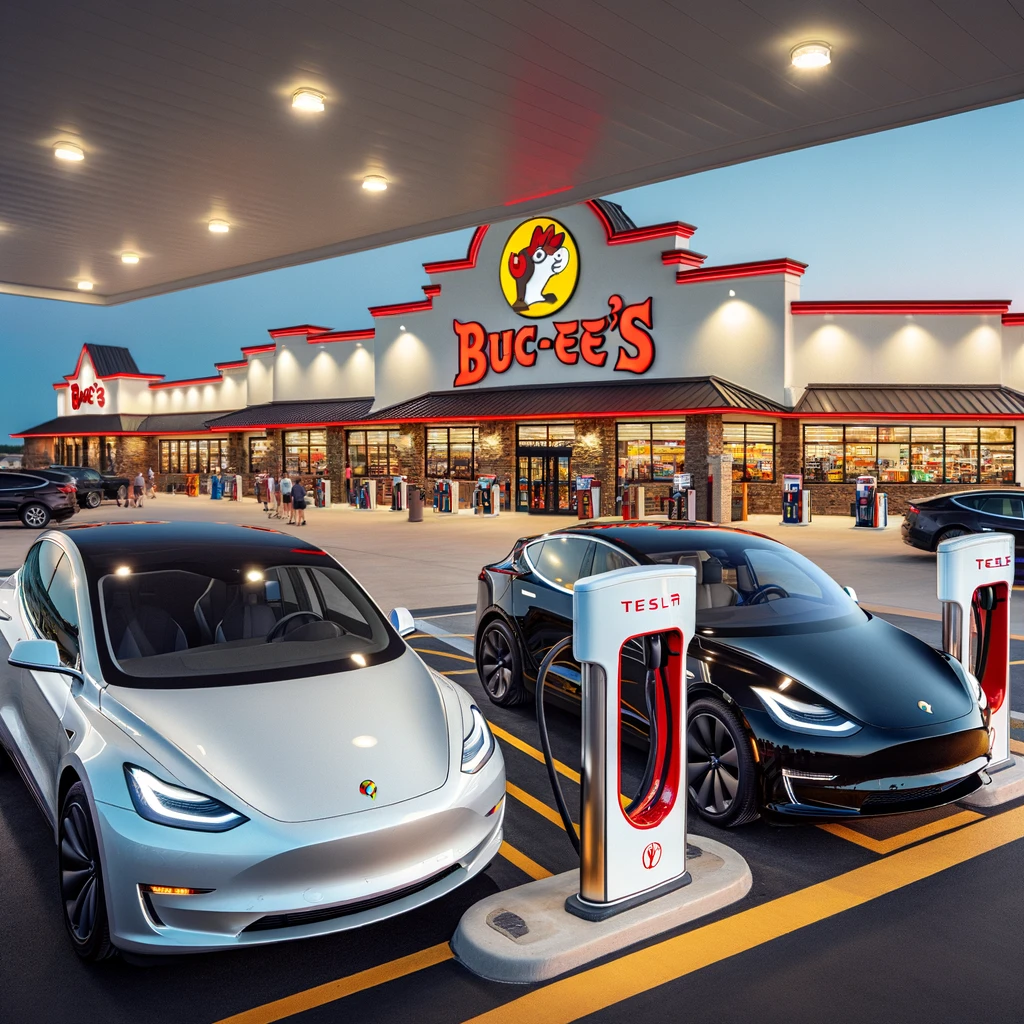When you think of Buc-ee’s, images of vast travel centers, clean restrooms, and a plethora of snacks might come to mind. But in recent years, Buc-ee’s has been quietly revolutionizing their offerings to include electric vehicle (EV) charging stations, making them a key player in the growing EV infrastructure network across the United States. This transformation underscores the company’s commitment to sustainability and its vision for the future of road travel.
Buc-ee’s Evolution and Commitment to Sustainability
Buc-ee’s began as a small convenience store in Texas in 1982. Today, it boasts over 40 locations primarily in Texas, with new stores popping up in states like Florida, Alabama, and Georgia. Known for its expansive layout and unparalleled amenities, Buc-ee’s has always prioritized customer convenience. As the automotive industry shifts towards electric vehicles, Buc-ee’s is adapting to meet the needs of EV drivers.
Expanding EV Charging Infrastructure
Buc-ee’s has partnered with Tesla to provide Supercharger stations at several of their locations. This partnership ensures that Tesla owners can recharge their vehicles quickly and efficiently. In addition to Tesla Superchargers, Buc-ee’s is also incorporating universal charging stations compatible with other EV brands, such as ChargePoint and Electrify America. This dual approach caters to a broader range of electric vehicle owners, ensuring that more drivers can benefit from their charging infrastructure.

Engineering and Technology of EV Chargers
1. Tesla Superchargers: Tesla Superchargers are among the fastest EV chargers available, with the latest V3 Superchargers delivering up to 250 kW of power. This allows a Tesla Model 3 Long Range to gain up to 75 miles of range in just 5 minutes, and up to 200 miles in 15 minutes. The V3 Superchargers use a liquid-cooled cable design to enable higher power delivery without overheating.
2. Universal Charging Stations: Universal charging stations like those from ChargePoint and Electrify America typically offer both Level 2 (240V) and DC fast charging (50 kW to 350 kW). Level 2 chargers are ideal for longer stops, such as overnight stays, as they provide about 25 miles of range per hour. DC fast chargers, on the other hand, can provide up to 80% charge in 30 minutes for most EVs, depending on the vehicle’s charging capacity.
Grid Connections and Power Management
Integrating high-power EV chargers into Buc-ee’s locations requires significant electrical infrastructure upgrades. These include:
1. High-Voltage Connections: Installing DC fast chargers necessitates connections to high-voltage power lines to ensure a stable and sufficient power supply. This often involves coordination with local utility companies to upgrade transformers and substations.
2. Load Management Systems: To prevent overloading the grid, Buc-ee’s employs advanced load management systems. These systems dynamically adjust the power delivery based on real-time demand and grid capacity, ensuring efficient and reliable operation without causing power outages.
3. Energy Storage Solutions: Some Buc-ee’s locations are exploring the use of battery energy storage systems (BESS) to store energy during off-peak hours and supply it during peak demand. This not only alleviates pressure on the grid but also provides backup power in case of outages.
Locations and Accessibility
Buc-ee’s strategically places its travel centers along major highways and interstates, making it an ideal stop for long-distance travelers. The inclusion of EV charging stations at these locations means that electric vehicle owners can recharge their cars while taking a break, grabbing a snack, or using Buc-ee’s famously clean restrooms. Some key locations with EV charging infrastructure include:
– New Braunfels, TX: One of the largest Buc-ee’s, this location offers a significant number of Tesla Superchargers.
– Katy, TX: Another major travel center equipped with both Tesla Superchargers and universal chargers.
– Daytona Beach, FL: A newer Buc-ee’s location that caters to the growing number of EV owners in Florida.
Benefits for EV Owners
1. Convenience: Buc-ee’s locations are known for their 24/7 operation, ensuring that EV drivers can charge their vehicles at any time of day or night.
2. Amenities: While waiting for their vehicles to charge, drivers can enjoy Buc-ee’s extensive selection of food, beverages, and retail items.
3. Speed: Tesla Superchargers can provide up to 200 miles of range in just 15 minutes, making it a quick stop for long road trips.
4. Compatibility: By offering both Tesla-specific and universal chargers, Buc-ee’s caters to a wide range of electric vehicles, enhancing the accessibility of their charging stations.
Challenges and Future Prospects
While Buc-ee’s is making significant strides in expanding its EV charging infrastructure, there are challenges to consider. The rapid growth of electric vehicles means that the demand for charging stations is increasing exponentially. Buc-ee’s must continue to invest in and expand their charging infrastructure to keep pace with this demand. Additionally, integrating fast-charging technology and ensuring the reliability of these stations is crucial to maintaining customer satisfaction.
Looking ahead, Buc-ee’s commitment to EV charging infrastructure reflects broader trends in the automotive industry and consumer behavior. As more drivers make the switch to electric vehicles, travel centers like Buc-ee’s will play a critical role in supporting long-distance travel for EV owners. By continuing to expand and improve their EV charging offerings, Buc-ee’s is not only enhancing their own business model but also contributing to a more sustainable and environmentally friendly future.
Statistics and Market Trends
1. EV Market Growth: The number of electric vehicles on U.S. roads is projected to reach 18.7 million by 2030, according to the Edison Electric Institute. This represents a significant increase from the approximately 1.6 million EVs in 2020.
2. Charger Availability: According to the U.S. Department of Energy, there were around 43,000 public EV charging stations with over 120,000 charging outlets in the U.S. as of 2023. Buc-ee’s contribution to this network is crucial for supporting the growing number of EVs.
3. Charging Speed Improvement: The introduction of ultra-fast chargers (350 kW) by companies like Electrify America can add about 20 miles of range per minute, making long-distance EV travel more feasible and convenient.
Buc-ee’s is more than just a travel center; it is a beacon of convenience and innovation on the American highway. By investing in electric vehicle charging infrastructure, Buc-ee’s is ensuring that it remains a relevant and essential stop for the next generation of road travelers. Whether you’re a seasoned EV driver or considering making the switch, Buc-ee’s commitment to providing reliable and accessible charging options makes it easier to embark on your journey with confidence.




